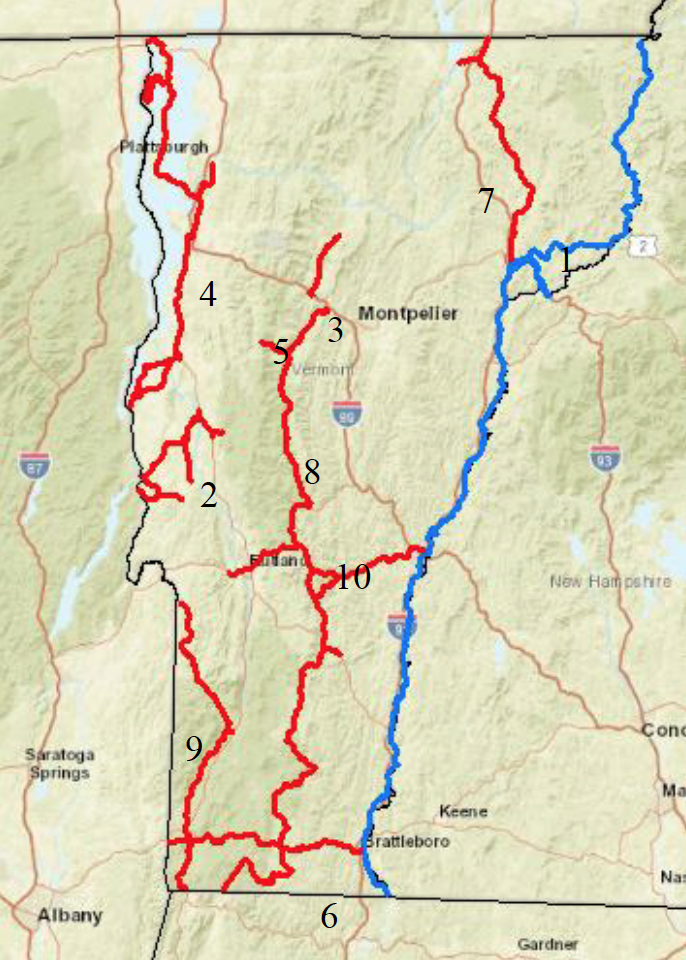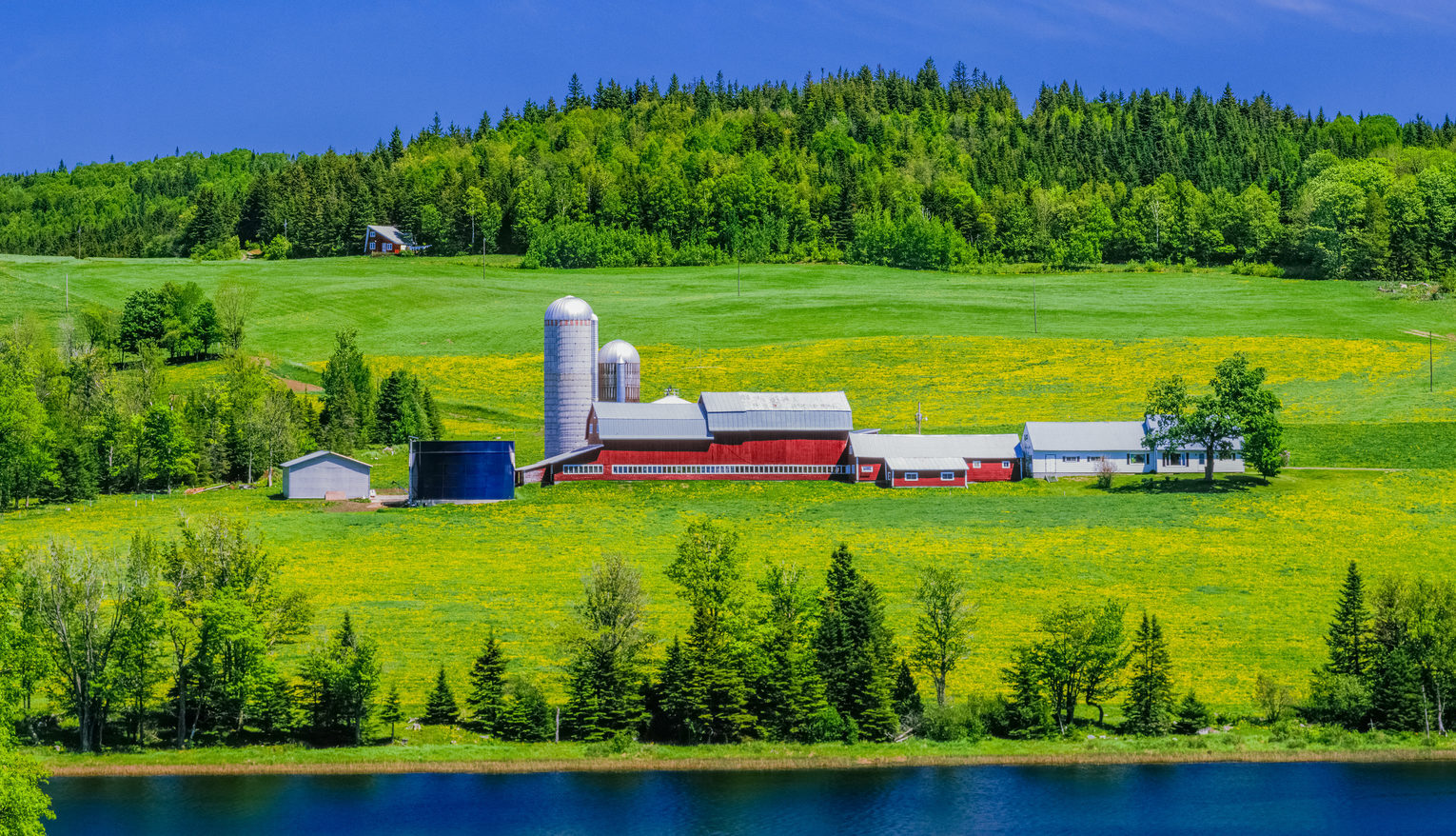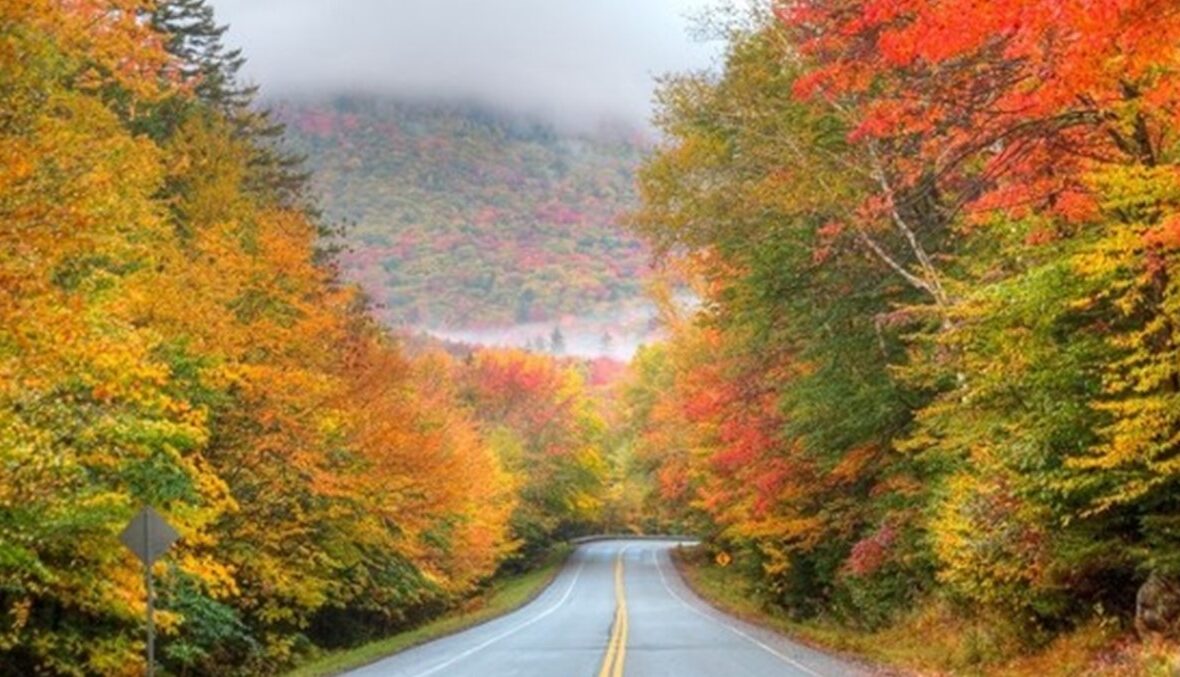Get the printable version
Each two-page document includes information about the state’s scenic byways program, in addition to a listitng and map of all state and national scenic byways within its borders.
Vermont’s Scenic Byways
Vermont established its Scenic Roads Law in 1977, creating the authority to designate state highways as scenic roads. The Vermont State Byways Program was established in 1996 to reflect the standards of the National Scenic Byways Program. The Vermont Scenery Preservation Council, created in 1966 and reactivated in 1993, oversees scenic conservation throughout the state and manages the byway designation process.
Key Points
- Vermont is home to one national scenic byway and nine state scenic byways.
- Scenic byways play a key role in promoting Vermont tourism, which in 2019 was a $3 billion industry that supported over 30,000 jobs in Vermont, generating $373 million in tax revenue.
- Visitors traveling the Connecticut River Byway can experience Vermont’s history while enjoying the many outdoor recreation amenities the route offers.
Vermont Byways

Map Key:
- National Scenic Byways
- State Scenic Byways

Byways Provide Access to Public Lands
Vermont byways provide access to the state’s most spectacular public lands, including 55 state parks, two national scenic trails, one national historic park, 4.5 million acres of state forests, and 80+ wildlife management areas.

A Billboard-Free State
Vermont joins Alaska, Hawaii, and Maine as one of four states to ban billboards, adding to the scenic beauty of all of its roadways.
About the National Scenic Byways Program
The National Scenic Byways Program, established by Congress in 1991, recognizes historic, scenic, and culturally important roads, all of which promote economic development and tourism in communities around the U.S. There are more than 1,200 byways in all 50 states.
All scenic byways exhibit one or more of six core intrinsic qualities — scenic, historic, recreational, cultural, archaeological, or natural. For a road to be named a national scenic byway, it must first be designated a state, tribal, or federal agency scenic byway. Once achieving that, a road may apply for national scenic byway designation, but its intrinsic quality must be of regional significance. All-American Roads are the very best of the national scenic byways, demonstrating at least two intrinsic qualities of national significance.